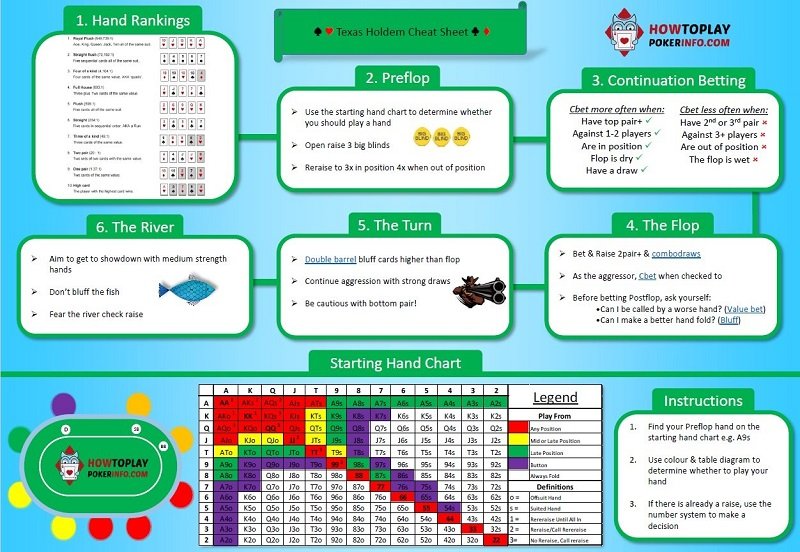How To Split A Flush In Texas Holdem Average ratng: 9,5/10 4087 reviews
OBJECTIVE: To become a winner you should make up the highest possible poker hand of five cards, using the two initially dealt cards and the five community cards.
Playing poker is about playing the odds. The following list gives the odds for outcomes in Texas Hold’em hands. When you realize how heavily the odds are stacked against you, you may want to rethink going all-in before the flop with two suited cards. Use the odds to your advantage: 1 percent (1-in-100): Percentage of. All players in this case have an ace high flush, but one player has a flush card. If it can beat the board, then he wins, otherwise it is split. For example: A Q T 8 3 (spades) Board. If the player has a 2 of spades, it does not beat any board card, so it's still split. If the player has the 4 of spades, it is better than the three and it would. Playing Flush and Straight Draws. Mathematics: Flushes & Straights: Simple Pot Odds: Implied Odds: Reverse Implied Odds. Watch SplitSuit's video on Flushes and Flush Draws for 8 hand histories involving strategy on playing flushes in Texas Hold'em. You are on the flop with a pretty decent flush draw. I was playing Texas Holdem last night with some friends at my house and this was the hand we were dealt: My cards 7♠ 6♦ His cards 10♠ 7♥ Cards on table 6♠ 8♠ Q♠ J♠ 2♠ Odd hand. Everyone else folded after the flop. Who would have won? My arguments, 1. Because there is a flush on the table our pocket cards are void and we split.
NUMBER OF PLAYERS: 2-10 players

NUMBER OF CARDS: 52- deck cards
RANK OF CARDS: A-K-Q-J-10-9-8-7-6-5-4-3-2
THE DEAL: Every player is dealt two cards face down which is commonly called ‘hole cards’.
TYPE OF GAME: Casino
AUDIENCE: Adults

Introduction to Texas Hold ‘Em
No Limit Texas Hold’em. Sometimes called the cadillac of Poker, Texas Hold ‘em is a fairly easy game to learn but can take years to master.
How to Play
To begin every player gets two pocket cards. A deck of cards is placed in the middle of the table and these are known as community deck and these are the cards that the flop will be dealt from.
Once all players have been dealt their initial two cards players will be asked to place their first bid. Once all players have placed their first bid a second round of bidding occurs.
Once all players have placed their final bids, the dealer will deal the flop. The dealer will flip over the first 3 cards, known as the “flop”, from the community deck. The goal is to make the best 5 card had you can with the three cards from the community deck and the two in your hand.
Once the first three cards have been flipped over, player will have the option to bid again or fold. After all players have had a chance to bid or fold, the dealer will flip over a fourth card known as a “turn” card.
The players still remaining will have the option to once again fold or bid. Now the dealer will flip the 5th and final card over, known as the “river”card.
Once all five cards have been flipped by the dealer, players will have one last chance to raise the bid or fold. Once all bids and count bids have been made it’s time for the players to reveal their hands and determine a winner.
First Round Betting: The Pre-Flop

When playing Texas hold ‘em a round flat chip or “disk” is used to represent the position of the dealer. This disk is placed in front of the dealer to indicate their status. The person sitting to dealer left is known as the small blind and the person sitting to the left of the small blind is known as the big blind.
When betting, both blinds are required to post a bet before receiving any cards. The big blind is required to post the equivalent or higher of the bet placed by the small blind. Once both blinds have posted their bids two cards are dealt to each player and remaining players can choose to fold, call, or raise. After the end of the game the dealer button is moved to the left so that every player takes on the blind position at some point to maintain the fairness of the game.
Fold – The action of surrendering your cards to the dealer and sitting out the hand. If one folds their cards in the first round of betting, they lose no money.
Call – The action of matching the table bet, which is the most recent bet that has been placed on the table.
Raise – The action of doubling the amount of the most recent bet.
The small and the big blind have the option to fold, call, or raise before the first round of betting ends. If either of them choose to fold, they will lose the blind bet that they initially placed.
Second Round Betting: The Flop
After the first round of betting ends the dealer will proceed to deal the flop. Once the flop has been dealt, players will access the strength of their hands. Again, the player to the left of the dealer is the first to act.
Since there is no compulsory bet on the table, the first player has the option to to take the three previous options discussed, call, fold, raise, as well as the option to check. To check, a player taps his hand twice on the table, this allows the player to pass the option to make the first bet on to the player to his left. All players have the option to check until a bet has been placed on the table. Once a bet has been placed, players must choose to either fold, call, or raise.
Third & Fourth Round Betting: The Turn & The River
How To Split A Flush In Texas Holdem Rules
After the second round of betting closes, the dealer will deal the fourth card of the flop, known as the turn card. The player to dealer left has the option to check or place a bet. The player that opens the bet closes the bet, after all other players have chosen to fold, raise, or call.
The dealer will then add the bets to the existing pot and deal a fifth card known as “The River”. Once this card has been dealt, the remaining players have the option to check,fold, call, or raise. Lets say all players decide to check. If that is the case it is time for all remaining players to reveal there cards and determine the winner. The player with the highest ranking hand is the winner. They receive the full pot and a new game begins.
Ties
In the chance of a tie between hands the following tie-breakers are used:
Pairs– if two players are tied for highest pairs a “kicker” or the next highest-ranking card is used to determine the winner. You continue until one player has a higher-ranking card or both are determined to have the same exact hand, in which case the pot is split.
Two pairs– in this tie, the higher ranked pair wins, if top pairs are equal in rank you move to the next pair, then move to kickers if necessary.
Three of a kind – higher ranking card takes the pot.
How To Split A Flush In Texas Holdem Game
Straights – the straight with the highest-ranking card wins; if both straights are the same the pot is split.
How To Split A Flush In Texas Holdem Card Game
Flush – The flush with the highest-ranking card wins, if the same you move to the next card till a winner is found or hands are the same. If hands are the same split the pot.
Full house – the hand with the higher ranking three cards wins.
Four of a kind – the higher ranking set of four wins.
How To Split A Flush In Texas Holdem Tournaments
Straight flush – ties are broken the same as a regular straight.

Royal Flush – split the pot.
Hand Ranking
2. Pair – Two of the same the same card (9,9,6,4,7)
3. Two pair – Two pairs of the same card (K,K,9,9,J)
4. Three of a kind – Three cards of the same ( 7,7,7,10,2)
6. Flush – Five cards of the same suit
7. Full House – Three card of a kind and a pair (A,A,A,5,5)

9. Straight Flush – Five cards in order all of the same suit (4,5,6,7,8 – same suit)
10. Royal Flush – Five cards in order of the same suit 10- A (10,J,Q,K,A)
Playing poker is about playing the odds. The following list gives the odds for outcomes in Texas Hold’em hands. When you realize how heavily the odds are stacked against you, you may want to rethink going all-in before the flop with two suited cards. Use the odds to your advantage:
1 percent (1-in-100): Percentage of time that no player holds an Ace or a King at a table in a 10-handed game
1 percent (1-in-100): Percentage of time that if you hold two suited cards, you’ll flop a flush
6 percent (about 1-in-20): Percentage of time that five community cards will give pocket suited cards a flush
6 percent (about 1-in-20): Percentage of time that you’ll be dealt a pocket pair
8 percent (about 1-in-12): Percentage of time that you’ll hit at least trips after having a pair on the flop
12 percent (about 1-in-8): Percentage of time that you’ll flop trips if holding a pocket pair
12 percent (about 1-in-8): Percentage of time that two more cards will flop in the same suit as a suited pocket pair
19 percent (about 1-in-5): Percentage of time that the five community cards will at least trip your pocket pair
32 percent (about 1-in-3): Percentage of time that you’ll pair one of your cards on the flop (with no pocket pair)
33 percent (about 1-in-3): Percentage of time that you’ll make a full house or better after having trips on the flop
35 percent (about 1-in-3): Percentage of time that you’ll make a flush on the turn or river if you have four cards to a flush after the flop




